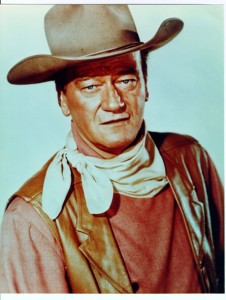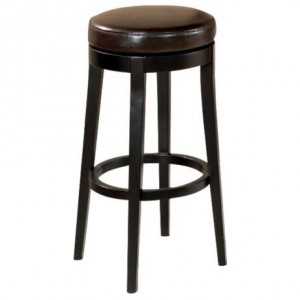I’ve been writing about the Single-Minded Proposition in recent posts, so I thought I’d continue with an excerpt from the second edition of my book, How To Write An Inspired Creative Brief . The following is from Chapter 12:
. The following is from Chapter 12:
No two creative briefs are exactly alike, but most contain a box that asks for “communication objectives” or “reasons why we’re creating this advertisement.” These two mean the same thing.
A brief also asks for the Single-Minded Proposition (SMP). Sometimes it’s called the key proposition or the One Unique Thing. Whatever you call it in your brief, it must list the one overriding reason why people will or should want to buy your product or service.
So where do you find the SMP? In the short list in Communication Objectives. It starts as a product feature for which you, the brief writer, must assign a product benefit (assuming your client hasn’t done that already).
From there, the Single-Minded Proposition emerges from the product benefits. A product can have hundreds of benefits, ranging from the core benefit that gives the product its singular appeal, all the way to very tenuous benefits that may in fact be valuable but aren’t going to have a significant impact on sales.
For example, it’s hard to argue with the unique design appeal of an Apple iPad. That’s central to its huge popularity. You just want to reach out and hold one. And play with it.
That could be the benefit that turns into the SMP.
On the other hand, my favorite chewing gum comes in a sleeve of 12 pieces. Why not 15? Or 9? Is this particular sleeve size a benefit? Well, yeah, but it’s not terribly significant. And it won’t necessarily effect my purchase decision.
So all product features translate into some kind of product benefit.
They also have the potential to translate into communication objectives, or reasons why we are asked, as creatives, to come up with an ad. However, we’re not given a list of eight or nine or 15 communication objectives.
It should be only three, four tops.
But…
The path from product feature to product benefit to Single-Minded Proposition isn’t direct. It’s not literal.
This spot on the brief is exactly where I think brief writers stumble and over-think things. That’s why I’m a big advocate of using a common vocabulary when you write a brief. It’s a matter of eliminating confusion and inexactness, and finding the right words to describe what you really mean.
I suggest that you use verbs to write communication objectives. (Review Chapter 12 on page 74)
Why verbs? They’re the John Wayne of words. They’re about action. About doing something. And we want our targets to do something: Buy the product we’re selling. 
Let’s use Apple again. We know that Apple stands apart in the tablet business because of its clean, intuitive design. I’d argue it’s at or near the top of the list of product benefits.
But I wouldn’t list “cool design” as a communication objective. It’s too vague. It doesn’t tell the creative team what to do about this…coolness.
Instead, I’d rather use a verb to guide the creatives in their thinking. I say “guide” rather than “instruct” or “direct” because as a brief writer it’s not my job to write the ad. I’m the first step in the creative process.
So, what might I say? Romance…excite…thrill (the verb, not the noun)…energize…
You get the idea, right? Keep it simple. Use direct verbs to describe the reasons why the creative team has been asked to write the ad.
The progression looks like this if we’re using the Apple iPad as our example:
Product feature: Uncomplicated, simple design (what the product is)
Product benefit: iPad’s cool makes you cool too (what the product gives you)
Remember: The feature talks to your head. The benefit talks to your heart.
Communication objective: Jolt the target into falling in love (again) with the latest Apple device (what we want the creative team to do)
Single-Minded Proposition: “________________________________” (how to communicate the product benefit that achieves the communication objectives)
(Hey, I know how to do this. You’re the one who needs practice. So practice!)
One tip: the SMP can be off the wall and outrageously over the top. How so? It’s not meant for public consumption. Its purpose is to inspire the creative team. Get their juices flowing. As the brief writer, you get to take the first crack at writing a headline.
So brief writers, arise and be daring. But don’t confuse the product benefit with the SMP itself!
Do them in your head.
You can write a brief in three simple steps. It’ll take you less then five minutes. Do this once a day, say during your commute to or from work, and you’ll discover your brain will add creative-brief-writing muscle before you know it.
Now let’s try something harder: the object on which you’re sitting right now. A chair.
Step one: identify the features of your chair. As I type this, I’m sitting on a counter stool in my kitchen. My stainless steel and leather stool is comfortable. It’s attractive. It was inexpensive. That’s three features. 
Next, identify what the benefit is for each feature.
Comfort: I gravitate toward this chair because it’s comfortable, so I like it. A lot.
Attractive: I feel proud of my excellent taste in design.
Inexpensive: My, aren’t I the clever chap for finding something so wonderful and at such a bargain.
Three features, three benefits.
Oh, and guess what. We’ve already found the hardest thing to write on a creative brief: the Single-Minded Proposition. It’s always one of the benefits. Always. The question is, which one?
For your practice exercise, it doesn’t matter. Write (in your head) an SMP for each benefit. I sometimes provide my creative teams with multiple SMPs. When you did as much creative testing as I did, you often need different creative approaches.
For comfort, try this:
You’d give this chair a standing ovation except you’re too comfortable to get up.
For design, try this:
You keep a photograph of this chair in your wallet and show it off any chance you get.
For inexpensive, try this:
If they gave out Nobel Prizes bargain hunters, you’d get one.
Notice that each SMP could be a headline. They don’t have to be good headlines, however. You’re the pioneer headline writer on the assignment. Your job is to write the first one to inspire something better from your creative team.
Now, you try it. Pick everyday objects—a pencil, your bedroom slippers, your cereal bowl, a coffee mug, your reading lamp. Keep them simple and unremarkable. It takes the pressure off.
Remember: three features, three benefits, three SMPs.
Also remember John Hegarty’s rule that the proposition is the first ad for the creative team. So don’t be lazy. This is a test.
Be pithy. Be clever. Be succinct.
Before you know it, SMPs will become second nature to you.

